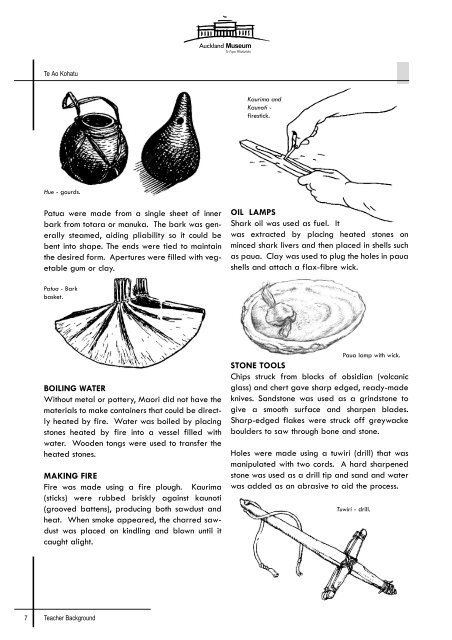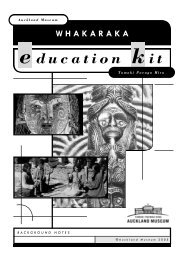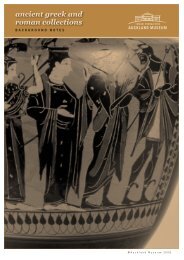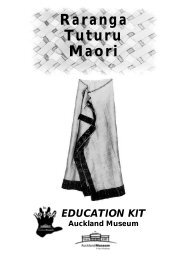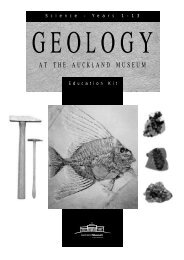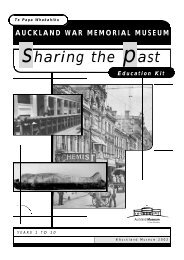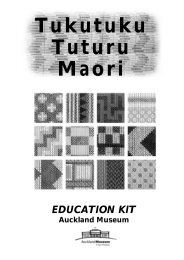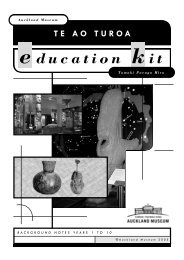You also want an ePaper? Increase the reach of your titles
YUMPU automatically turns print PDFs into web optimized ePapers that Google loves.
Te Ao Kohatu<br />
Hue - gourds.<br />
Patua were made from a single sheet of inner<br />
bark from totara or manuka. The bark was generally<br />
steamed, aiding pliability so it could be<br />
bent into shape. The ends were tied to maintain<br />
the desired form. Apertures were filled with vegetable<br />
gum or clay.<br />
Patua - Bark<br />
basket.<br />
BOILING WATER<br />
Without metal or pottery, Maori did not have the<br />
materials to make containers that could be directly<br />
heated by fire. Water was boiled by placing<br />
stones heated by fire into a vessel filled with<br />
water. Wooden tongs were used to transfer the<br />
heated stones.<br />
MAKING FIRE<br />
Fire was made using a fire plough. Kaurima<br />
(sticks) were rubbed briskly against kaunoti<br />
(grooved battens), producing both sawdust and<br />
heat. When smoke appeared, the charred sawdust<br />
was placed on kindling and blown until it<br />
caught alight.<br />
7 Teacher Background<br />
<strong>Auckland</strong> <strong>Museum</strong><br />
Te Papa Whakahiku<br />
Kaurima and<br />
Kaunoti -<br />
firestick.<br />
OIL LAMPS<br />
Shark oil was used as fuel. <strong>It</strong><br />
was extracted by placing heated stones on<br />
minced shark livers and then placed in shells such<br />
as paua. Clay was used to plug the holes in paua<br />
shells and attach a flax-fibre wick.<br />
Paua lamp with wick.<br />
STONE TOOLS<br />
Chips struck from blocks of obsidian (volcanic<br />
glass) and chert gave sharp edged, ready-made<br />
knives. Sandstone was used as a grindstone to<br />
give a smooth surface and sharpen blades.<br />
Sharp-edged flakes were struck off greywacke<br />
boulders to saw through bone and stone.<br />
Holes were made using a tuwiri (drill) that was<br />
manipulated with two cords. A hard sharpened<br />
stone was used as a drill tip and sand and water<br />
was added as an abrasive to aid the process.<br />
Tuwiri - drill.


